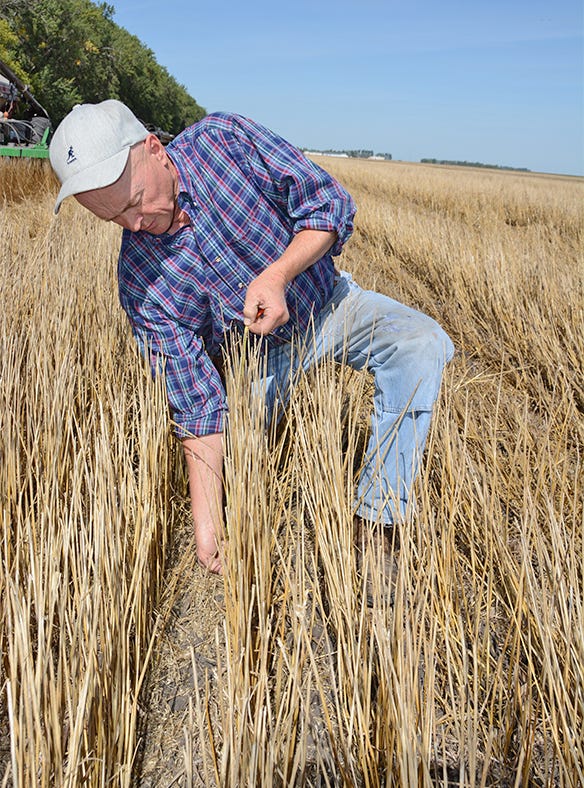November 1, 2017

No-tilling heavy clay soil doesn’t sound like it would be easy. You’d think that leaving residue on the soil surface would just make wet, cool soil even wetter and cooler. But Lynn Overboe, Kindred, N.D., has been making it work.
The key, he found, is tile drainage.
Overboe grows corn, soybeans and wheat on very flat land, some of which has very heavy clay subsoils. His farm lies on the bottom of the ancient Lake Agassiz. The clay layer below the 1-2 feet of topsoil is so dense that the water doesn’t drain down any further. That’s an advantage when it’s dry, but a problem when it’s too wet.
In other parts of the U.S., deep ripping or subsoiling might improve the situation. Dave Franzen, North Dakota State University Extension soil specialist, says deep ripping in the Red River Valley doesn’t work becayse the clay subsoils are 50-100 feet deep. “There’s no way to punch a hole through it,” he says.
However, properly installed drain tile can move excess moisture out of the soil.
Over the past five years, Overboe has had all of his fields pattern tiled. Four-inch diameter tile lines were installed 24- to 36-inches deep. The lines were spaced 40-feet apart, except in very light soil where they were spaced 100- feet apart. Water collects at the end of the fields and is pumped into county and state highway ditches.
“Now, I can leave residue on the soil surface and not have to worry about the field being too wet in the spring,” he says.
After installing tile, Overboe saw the most dramatic change in a 355-acres tract along the Sheyenne River. He couldn’t plant the field in 2015 because it was too wet. He ended up enrolling it in the Prevent Plant program. After the field dried out over the summer, Overboe was able to tile it. In 2016, he no-till planted corn in it in late April, even as many of the surrounding fields were being tilled to dry them out.
An electric substation sits in the middle of the field. The tile doesn’t run below the substation. When Overboe was planting corn, the power company was doing some work at the substation and had 4-wheel-drive vehicles slogging through the mud on the substantion property to get to the equipment.
“I was able to plant right up to and around the substation without a problem,” he says. “Without the tile, I wouldn’t have been able to get through there. The field probably would have been Prevent Plant again.”
No-till tricks
Overboe does a couple other things to make tile and no-till work well together:
• He leaves corn and wheat stubble standing. Overboe uses a stripper header to combine wheat, and he doesn’t use a stalk chopper on corn. Given the angle of the sun in late April and early May, more sunlight is able to reach the ground and help dry it out and warm it up when the stubble is standing rather than laying on the ground like a mat.

TALL STUBBLE: Lynn measures the 18-24-inches of wheat stubble that was left standing by the stripper header.

• He controls field traffic. After installing tile, Overboe didn’t work the whole field. Instead, he made a 12-foot wide toolbar and mounted two loader blades on it to pull the berms back over the trench. He also asked tile installers to leave their loaded trucks on the roads so they wouldn’t rut up the fields. “I don’t want to work the whole field after installing tile, because tillage destroys the soil structure and reduces the earthworm population that I’ve built up with no-till,” he says.
Earthworms are an indicator of soil health, he says. They eat residue, produce organic matter and create tunnels for water to flow through.
“That’s the whole point of no-till — to improve the structure and the biological life in the soil,” says Overboe. “Tile drainage helps me do that.”
You May Also Like




